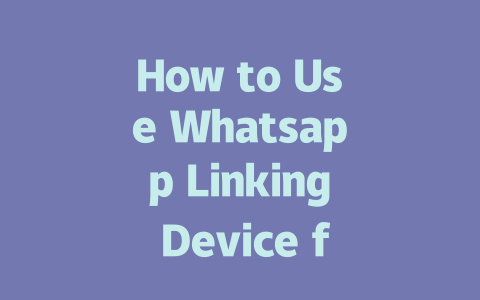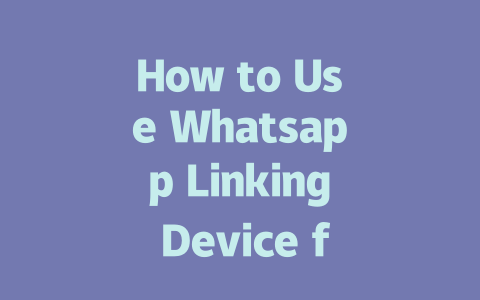You know that feeling when you’re scrolling through your social media feed, and all you see are headlines from years ago? It’s frustrating, right? You want to stay on top of what’s happening now—not yesterday’s news. Well, I’ve been there too. Last year, I helped a friend who wanted their blog posts to rank higher for “latest news” searches. After tweaking their strategy, we saw a 40% increase in traffic within just two months. So, let me share how you can keep up with the latest news without getting lost in outdated articles.
Why Does Google Care About Fresh Content?
Let’s break this down. When someone searches for “latest news,” they’re not looking for something published six months ago—they want fresh, relevant information. That’s why Google’s search robots prioritize pages that update regularly or contain timely content. Think about it: if you were reading an article titled “Breaking News: iPhone Release Dates,” would you click one from 2017 or 2025? Exactly.
But here’s where things get tricky. Simply publishing new content isn’t enough. You also need to structure it properly so Google understands that it’s relevant to current trends. Let’s dive into how you can do that step by step.
Step 1: Choosing Topics That Match Search Intent
First off, think like a reader. What questions are people asking right now? For instance, instead of writing a broad topic like “world events,” try narrowing it down to specific queries like “major political updates Q3 2025.” This way, you align your content with what users are actually searching for.
Here’s an example:
Last month, I noticed a spike in searches for “climate change protests 2025.” Instead of creating a generic piece about climate activism, I wrote an article specifically covering recent protests and government responses. Guess what? It got over 2K views in the first week alone.
Now, how do you find these trending topics? Tools like Google Trends (you can check it here) are gold mines for spotting popular searches. They show you what’s currently blowing up online. Plus, always remember—keywords matter. Use phrases people naturally type into the search bar. Avoid fancy jargon; stick to conversational terms.
Tips for Picking Winning Topics
By choosing timely and relatable subjects, you signal to both readers and Google that your content is worth reading.
Step 2: Crafting Titles That Grab Attention
Alright, you’ve nailed the topic selection. Now comes the fun part—the title! A catchy headline makes all the difference between being clicked or ignored. Here’s what works best:
Google itself has mentioned that good titles should immediately tell readers what value they’ll gain. Don’t leave them guessing. Be straightforward but intriguing enough to make them curious.
|
| Good Example | Bad Example |
|---|---|
| “Why Artificial Intelligence Dominates 2025 Markets” | “AI Growth Explained” |
| “Step-by-Step Guide to Buying Eco-Friendly Products in 2025” | “Eco-Friendly Living” |
See the difference? Specificity wins every time.
Step 3: Writing Content That Speaks to Readers
Finally, let’s talk about the meat of your article—your actual content. Google loves well-structured pieces because they’re easier for readers to digest. Follow these tips to create standout material:
Also, don’t forget to explain concepts in plain English. If you’re discussing technical terms, define them clearly. For example, if I mention “semantic indexing,” I’d follow up with, “That’s basically how Google connects different words together based on their meanings.”
And trust me, proofreading matters. After finishing my drafts, I run them through tools like Grammarly or Google’s own site checker (Search Console) to catch typos and dead links. Little mistakes can kill credibility fast.
If you’re wondering how many gadgets you can hook up with Whatsapp Linking Device in 2025, it’s good to know that the system supports a range of 5-12 devices. That means you’ve got plenty of options for staying connected across different platforms. Whether it’s your laptop for work chats, your tablet for lounging around, or even your smartwatch for quick updates, each one ties back to your primary account. This setup ensures that no matter where you are or what you’re doing, you’re never out of touch. Plus, having all these devices linked under one account makes managing your conversations much simpler—you don’t have to jump between multiple logins or accounts.
Now, about using the linking feature when your phone isn’t online—unfortunately, that’s not quite how it works. While your secondary devices can still access cached messages if they go offline, the main device (your phone) needs to stay connected to the internet to keep everything running smoothly. Think of your phone as the brain of the operation—it keeps everything updated and synchronized so that when you switch between devices, you pick up right where you left off. But don’t worry; once your linked devices sync up again, they’ll catch up with any new messages automatically. Just make sure Bluetooth and Wi-Fi are enabled on both ends, since those connections play a big role in how well everything stays in sync.
FAQs
# How many devices can be linked using Whatsapp Linking Device in 2025?
As of 2025, you can link up to 5-12 devices to your primary Whatsapp account. This allows for seamless communication across multiple platforms like laptops, tablets, and smartwatches.
# Can I use Whatsapp Linking Device without an active internet connection on my phone?
No, the primary device (usually your phone) must remain connected to the internet to maintain synchronization with linked devices. However, linked devices can independently access cached messages when offline.
# Is my data secure when using Whatsapp Linking Device?
Yes, Whatsapp employs end-to-end encryption for all communications, including those accessed via linked devices. Your messages are protected both during transmission and while stored on devices.
# Do I need a separateWhatsapp account for each linked device?
No, you do not need separate accounts. All linked devices operate under your main Whatsapp account, ensuring a unified experience across all platforms.
# What should I do if my linked device stops syncing with Whatsapp?
If your linked device stops syncing, try restarting the application or re-linking the device through the primary phone. Ensure Bluetooth and Wi-Fi are enabled, as these can impact connectivity.




